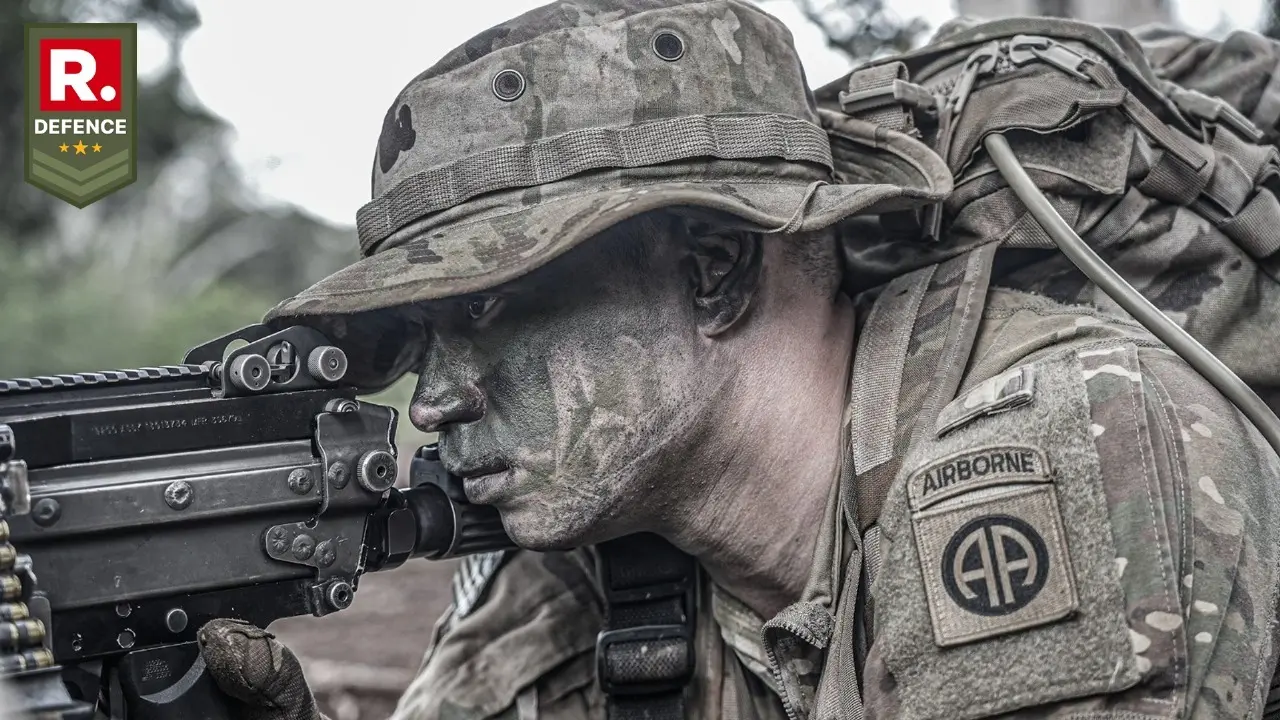Updated 22 August 2024 at 15:53 IST
US Army Introduces Next-Gen Command and Control With Advanced Connectivity in Major Field Exercise
The U.S. Army is advancing its command and control (C2) capabilities, focusing on survivability, interoperability, data-enabled operations, and modular design.
- Defence News
- 4 min read

Louisiana, USA: The U.S. Army is actively evolving its command and control capabilities, employing advanced technologies to enhance battlefield connectivity and ensure seamless communication between units. In a significant field exercise, deployed brigades are rapidly establishing their networks, working closely with allied forces, and toggling between multiple communication methods such as 5G and low-earth-orbit satellites to maintain uninterrupted data flow.
The exercise, part of the rotation of the 2nd Brigade, 101st Airborne Division, at the Joint Readiness Training Center (JRTC), Fort Johnson, Louisiana, underscores the Army's commitment to building a resilient next-generation command and control system. Maj. Gen. Patrick Ellis and Mark Kitz, key leaders in the Army's tactical communications programs, emphasized the importance of survivability, interoperability, data enablement, and modularity in the evolving network infrastructure.
New Network Priorities Reflect Lessons from the Ukraine Conflict
As the Army progresses in developing its tactical communications, the four core priorities — survivability, interoperability, data-enabled operations, and modular design — are being rigorously tested in real-world scenarios. Maj. Gen. Patrick Ellis highlighted that these priorities have been shaped by lessons learned during operations in Ukraine, where changing conditions required constant adaptation of communication strategies.

During his tenure as deputy chief of staff for U.S. Army Europe and Africa, Ellis observed how division staff rotated through the theatre, each bringing different communication equipment and configurations. The units quickly adapted to what worked best in the evolving battlefield conditions, demonstrating the need for flexibility and resilience in Army networks.
Advertisement
The Role of Mobile Technology in Network Defense
One notable adaptation involves the use of mobile phones in conflict zones. Initially, mobile phone use was highly dangerous, as any transmission on military networks would result in an immediate enemy strike. However, Ellis noted a shift in tactics, where mobile phones on secure networks are now used to avoid detection in the electromagnetic spectrum, offering a new layer of survivability.
The Army's network experimentation has led to the development of innovative tools, such as a radio data tool used by the 2nd Cavalry Regiment in Europe. This tool allows English speech to be translated into text in the target language, enhancing communication with allies. Such innovations are now being deployed globally, reflecting the Army's commitment to leveraging technology for tactical advantage.
Advertisement
Next Generation C2 Program
As the Army looks to the future, the Next Generation Command and Control (C2) program is set to redefine its communication architecture. According to Mark Kitz, the Army expects industry players to compete for this program by early 2026, signalling a significant shift towards more advanced and integrated systems.
The recent exercise involving the 2nd Brigade's air assault from Fort Campbell, Kentucky, to Fort Johnson, Louisiana, over a distance of nearly 500 miles, demonstrated the capabilities of the current communication systems. The brigade maintained constant connectivity using a combination of 5G commercial technology, satellite communications, and tactical radios, showcasing the effectiveness of these diverse methods.
Leveraging Data for Strategic Decision-Making
One of the key benefits of the evolving C2 program is the ability for commanders to access and analyze vast amounts of real-time data. This data includes information on adversary locations, terrain, environmental conditions, and historical trends, allowing for more informed decision-making during operations.

Mark Kitz illustrated how operational models can now be run quickly, enabling commanders to evaluate potential outcomes of tactical decisions. For example, commanders can assess the impact of deploying reserves or adjusting fire support coordination lines on future operations, leading to more precise and effective strategies.
In addition to leveraging advanced technology, the Army is also employing innovative tactics to secure its communication networks. During the exercise at JRTC, the brigade commander utilized radio frequency decoys to conceal the command post, demonstrating the importance of deception in protecting critical infrastructure.
Published By : Yuvraj Tyagi
Published On: 22 August 2024 at 15:53 IST
